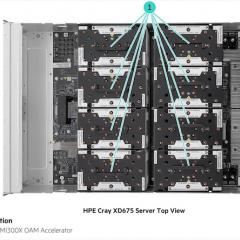
How do people weigh up decisions with short-term and longer-term consequences? For example, the decision to attend university, eat healthy food, or to quit smoking all offer benefits that emerge over the longer term, but also involve more immediate challenges.
Research Fellow Dr Tim Ballard, in The University of Queensland’s School of Psychology, is leading a project in collaboration with the UK’s University of Warwick to test a series of computational models that each propose an explanation for how people make these types of decisions. These decisions are referred to in psychology as ‘inter-temporal choices’ and involve deciding between options with consequences that occur at different points in time.
Tim’s aim is to develop and promote the methodological tools that enable people to conduct more rigorous and replicable research in this field.
He is using RCC-supported high-performance computer Tinaroo and an HPC-embedded version of RCC-supplied scientific workflow Nimrod, a specialised parametric modelling system, to test the models essential to his research and ensure they deliver reliable results.
The computational models are being used as measurement tools to quantify constructs, such as impulsiveness, based on people’s patterns of decision making.
“Many of the models that have been proposed include a so-called ‘temporal discount rate’ parameter that reflects how patient people are in their decision making,” said Tim.
“Higher rates of discounting are indicative of greater impulsiveness as they indicate that people give less weight to consequences that are far off into the future and more weight to more immediate considerations. Lower rates are indicative of less impulsiveness.
“This analysis required me to generate 11 models times 200 simulated data sets per model—a total of 2,200 simulated data sets. I then had to estimate the parameters of each one.”
Tim used Tinaroo, exclusive for UQ researchers’ use, to run the algorithms required to estimate the model parameters. And, upon advice from the RCC Support Desk, he used Embedded Nimrod to test the models with simulated data.
Embedded Nimrod allows researchers to run problem instances in parallel on an RCC-supported HPC, enabling experiments to run in a much shorter time compared to a local desktop machine.
“[With Embedded Nimrod], the analysis could run continuously in allocated nodes rather than clogging up the queues with heaps of small jobs,” said Tim.
“[With Tinaroo], each run took anywhere between 10 minutes and 20 hours (depending on the complexity of the model being analysed). This is actually regarded as pretty fast, because I could parallelise by splitting the analysis across processors and nodes.
“On my desktop, some of the runs would have taken several days, and I’d have to run them all one at a time. In theory this means the analysis would have taken years to run! If this were the case, I wouldn’t have even attempted it.
“Using an HPC and Nimrod allowed me to do an analysis that just couldn’t have been done without it.”
To learn how to use Tinaroo, Tim attended one of RCC’s introductory HPC workshops, currently being held online during the COVID-19 pandemic. He also found RCC’s HPC user guides “extremely helpful”.
“I’ve made a number of enquiries to the RCC Support team over the years and the team has been really helpful. [RCC HPC Manager] David Green in particular has been extremely helpful and patient,” said Tim.
Tim presented his research at the Annual Meeting of the Society for Judgment and Decision Making last year in Montreal, Canada. He is currently preparing a paper based on the research in conjunction with his Warwick University collaborators Assistant Professor Emmanouil Konstantinidis and Research Fellow Dr Ashley Luckman.
Tim’s decision to use RCC-supported infrastructure will hopefully have many more positive short-term and longer-term benefits to come.



